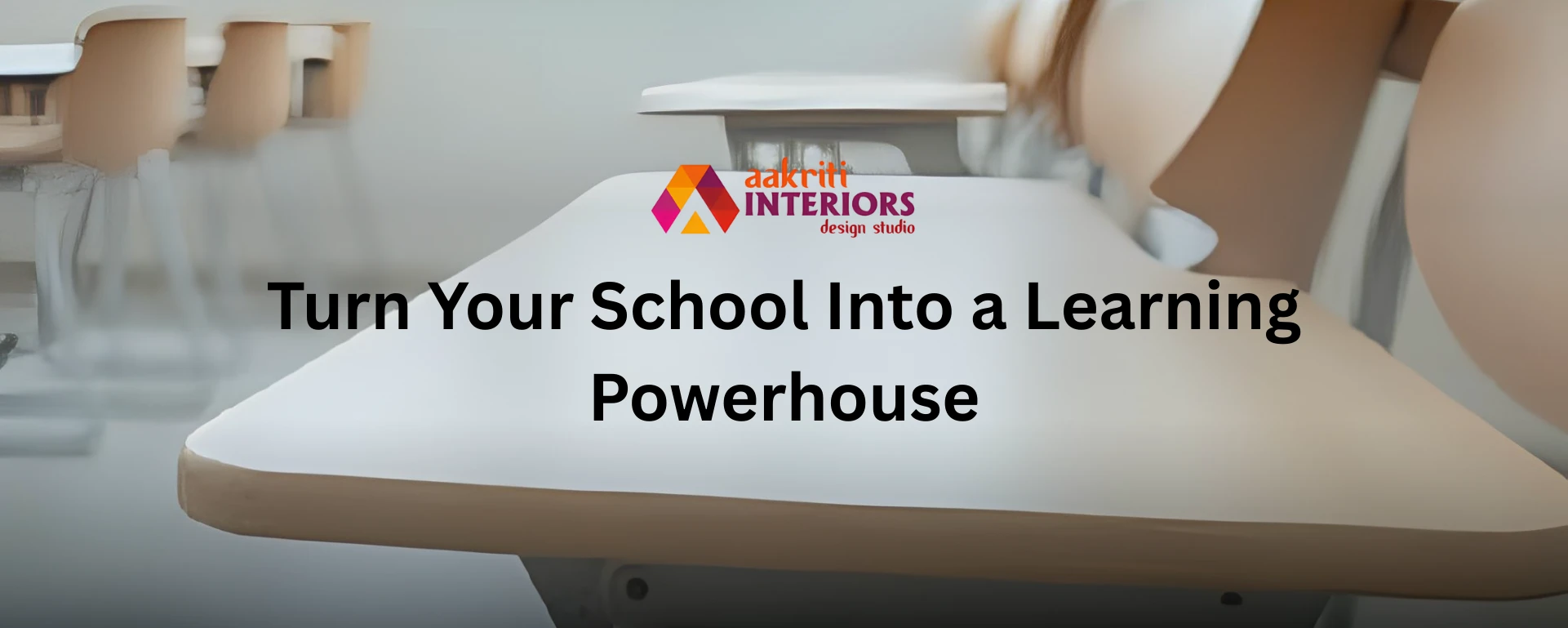Published on September 17, 2025

The concept of smart classrooms is transforming educational environments by integrating cutting-edge technology with innovative interior design. For schools and institutions in Ranchi, creating such spaces boosts engagement, collaboration, and learning effectiveness. An expert interior designer in Ranchi plays a vital role in crafting classrooms that not only incorporate interactive digital tools but also prioritize comfort, flexibility, and aesthetics. This article explores how modern classrooms blend technology with design principles to foster dynamic, future-ready educational experiences.
Smart classrooms are changing education by mixing tech and design to improve learning. Comfortable furniture helps students during long classes, and layouts that can change make it easy to work in groups and get involved. Cool tech like smartboards and tablets turns old lessons into engaging experiences for all types of learners.
In Ranchi, interior designers are coming up with cool ideas. They're designing classrooms that can be changed around to fit different ways of teaching. They're also making sure the rooms have good sound quality, lots of natural light, and clean air. This helps students stay healthy and learn better. With these new classrooms, teachers can get students involved and boost their creativity and teamwork.
Having good furniture in classrooms is a must. It helps students stay healthy and focused. Chairs and desks that can be adjusted are great because they fit different body types. They also help students sit up straight, which means they won't get as tired or uncomfortable. When students are comfy, they can pay better attention and get involved in class. The Interior designer in Ranchi focuses on getting comfortable and lasting furniture that also looks good and fits today's style. Using desks and chairs that can be moved makes it simple for teachers to change the classroom setup for different lessons, which helps students work together and learn better. Good furniture does more than just work; it also makes the classroom feel like a nice place to be.
Tech is key to a smart classroom. Interactive whiteboards, tablets, wireless displays, and VR devices make learning real and hands-on. They also let teachers customize lessons, give feedback right away, and connect with the world. Interior designers work closely with educational institutions to strategically position technology for optimal visibility, accessibility, and safety. Effective cable management and integration with classroom design minimize clutter, creating organized, distraction-free environments. This careful planning supports a smooth user experience, encouraging both students and teachers to leverage technology confidently.
Instead of the usual rows of desks, flexible classrooms use setups that can be changed to help students work together and be creative. With movable walls, furniture that can be used for different things, and open areas, teachers can easily change the room for group projects or individual work. This flexibility means the classroom can adapt to different teaching styles and all sorts of student work. Clever classroom layouts can really boost how many students fit comfortably. When you can move things around, lessons get more fun and everyone can join in. This helps students learn how to work as a team, which is great for what they'll do later in life.
| Element | Impact on Students | Conventional Classroom | Smart Classroom (Optimized Design) |
|---|---|---|---|
| Ergonomic Furniture | Reduces fatigue, improves posture, supports longer attention span | Fixed wooden benches; average sitting time comfort ~30–40 mins | Adjustable desks & chairs; comfort sustained for 2+ hours with fewer posture issues |
| Lighting | Enhances concentration, reduces eye strain, stabilizes mood | Harsh fluorescent lighting; ~20–25% higher complaints of eye strain | Daylight integration + LED task lighting; improved focus and ~15% higher test scores (per studies) |
| Colors | Affects motivation, creativity, and emotional balance | Neutral/dull walls; limited psychological stimulation | Strategic use of calming blues (focus) & yellow accents (creativity); increased participation and engagement |
Good acoustic design stops noise from being a problem, so teachers and students can easily talk to each other. Things like sound-absorbing panels, carpets, soft furniture, and how a room is set up can cut down on echo and background noise. Local interior designers create acoustic designs that work well with our climate and local building materials. Making classrooms sound better helps create a calmer, quieter place where students can focus and join in class discussions more easily, which, in turn, helps them do better in school.
Smart classrooms are now often built with sustainable stuff. Think low-VOC paints, floors made from recycled materials, and lights that save energy. Good airflow and plants make the air better, which helps kids stay healthy and think better. Designers are picking choices that are good for the environment and in line with the latest green building ideas. By teaching students and schools about these good things, design choices can be more responsible. This cuts down on environmental damage and makes spaces healthier and more comfy, which is key for doing well in the long run.
To get the most out of tech in schools, teachers and students need regular training and support. Programs that show how to best use interactive tools can really help improve learning. Design firms can work with schools, giving advice on how to blend tech with classroom design. Easy-to-use interfaces and tech support help avoid problems during class time. When people are comfortable with tech, they’re more likely to try new teaching methods and get students involved. This mixes design, tech, and learning together smoothly.
Smart classrooms are the way forward for education. They blend tech and design to make learning spaces that are inspiring, flexible, and open to everyone. Interior design students in Ranchi can really grow by learning about these ideas from a good local designer. If they use comfy furniture, interactive tech, layouts that can change, and earth-friendly habits, they can create learning areas that boost a love for learning and help students do well.